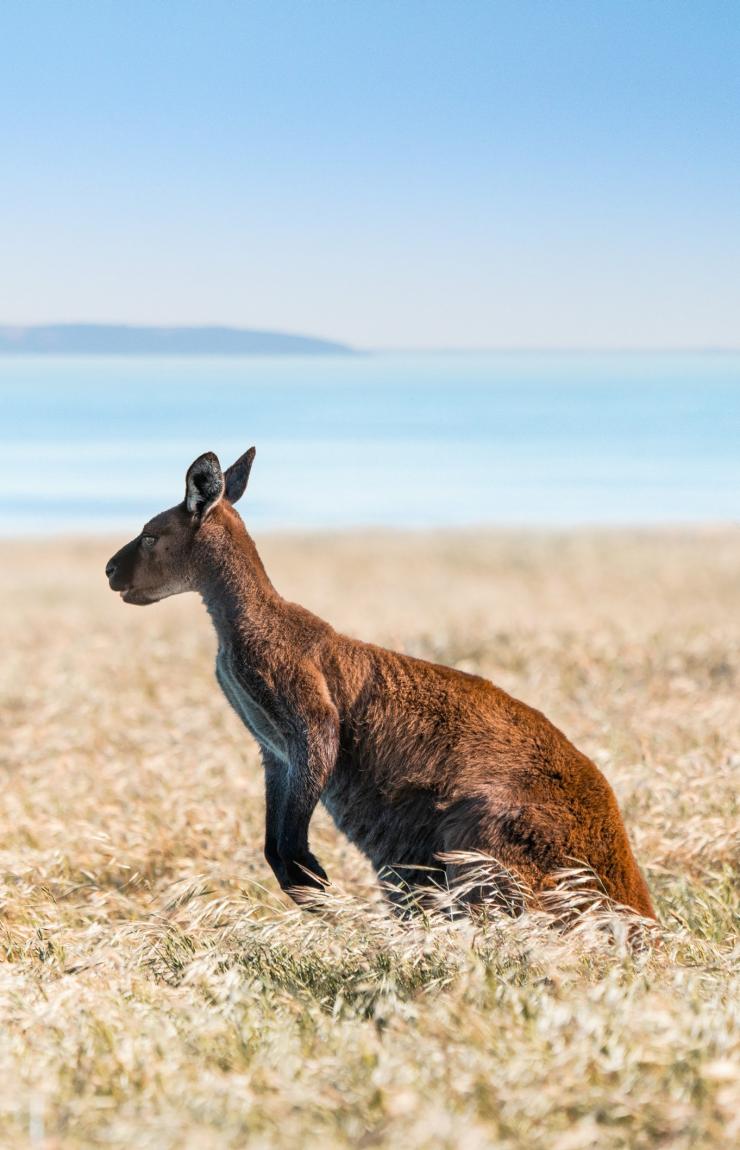
Bees with backpacks
Honey bees are dying at an unsustainable rate, intensifying food security threats. Scientists in Australia have developed an innovative power-efficient micro-sensor platform that can track individual bees. It investigates the forces causing their decline, helping to improve honey bee health and protect agricultural industries around the world.
Honey bees are vital to the environment, agriculture and food production. They help pollinate close to 75 per cent of plants and one-third of the food we consume, including many fruits and vegetables.
Their pollination is estimated to be worth more than A$200 billion annually to the global economy.
In the last 50 years, there has been an unprecedented decline in honey bee populations globally, says Professor Paulo de Souza, an expert in micro-sensors at the Commonwealth Scientific and Industrial Research Organisation (CSIRO), Australia’s national science organisation.
Between 1947 and 2008, the United States went from having 5.9 million honey bee colonies to fewer than 2.5 million – a decrease of roughly 60 per cent. Elsewhere, it’s estimated that up to 90 per cent of bees have been lost.2
With the global human population projected to exceed 9.5 billion by 2050, that rate of bee decline is unsustainable, says Professor de Souza. “It will be impossible to produce as much food as we need in three decades, or earlier, if we continue losing bees at the current rate.”
Professor de Souza is head of the Global Initiative for Honeybee Health (GIHH) – an Australian led collaboration between the CSIRO, hundreds of international researchers, farmers and beekeepers, and industry partners including Intel, Japan’s Hitachi Chemicals, and Brazilian mining company, Vale.
The objective is to improve honey bee health and keep them pollinating food crops into the future. But first, researchers need to better understand the causes of their decline.
Key suspects include pesticides, water and air pollution, hive mismanagement, diet, habitat loss, diseases – which may be behind the mysterious colony collapse disorder and parasites – like the Varroa mite (Varroa destructor), a tiny bloodsucker that exclusively kills honey bees. Extreme weather events linked to climate change, such as floods and heat waves, are also wreaking havoc.
Bees with backpacks

Professor Paulo de Souza working with Honey Bees in Tasmania © CSIRO
The catalyst for the GIHH is a power-efficient micro-sensor platform, developed by Professor de Souza and his team at the CSIRO’s Data 61 business unit.
A 2.5-millimetre-wide sensor, about the size of a match head, is being manually attached to individual bees using super glue.
“We call them bees with backpacks,” Professor de Souza says.
They can track individual bees, recording the duration of foraging missions and rest periods, movement between hives and time of death.
Using the data collected from these microsensors, teams can more effectively assess the impact of different stress factors.
The micro-sensors work like an access card. An antenna near the hive entry reads a unique number as a bee comes and goes. The digits correspond to factors such as geography, species type, and sex and status of the bee.
The data is sent to a small computer and uploaded to the cloud. Using innovative data collection infrastructure, developed by de Souza and his team at CSIRO, the data can be analysed by scientists around the world.
Innovative batteries
To power the micro-sensors, de Souza and his team built an innovative energy harvesting device about the diameter of a human hair. It uses tiny springs to generate energy from the vibration of the bee in flight.
Next, the team built a specialised battery. Unlike thin-film batteries, which consist of layers of flat sheets, they created a battery with a unique microstructure resembling the inside of a cave, filled with stalactites and stalagmites.
This additional surface area means a battery of equal volume can store up to 10 times more energy, says de Souza.
The micro-sensors can be used in important ecosystems, including the Amazon rainforest in South America, where researchers are tracking the migration of Africanised killer bees, and investigating the impact of climate change and deforestation on native bees.
Soon, Professor de Souza expects to have tagged more than 1 million bees.
“The more experiments, the more data we collect. And the more data we collect, the more knowledge we can generate to learn about the problem.”
Micro-sensors and Mars rovers

Honey bee with micro-sensor © CSIRO
A native of Brazil, Professor de Souza moved to Tasmania with his family in 2008. Five years later, he won a CSIRO grant to develop micro-sensors about “the size of a grain of sand”.
In addition to the honey bee project, these sensors will have applications in medicine, biosecurity, infrastructure and environmental monitoring, and the Internet of Things.
“You could have wearables with sensors embedded in them,” says de Souza. “Sunglasses, for example, could have sensors that tell you whether there are dangerous levels of UV light while you’re at the beach.”
Or you could have sensors in your bloodstream, measuring body functions in real time, or providing feedback about the efficacy of a drug, he says.
A physicist and materials scientist by training, Professor de Souza’s expertise in hardware miniaturisation began during his PhD work at Johannes Gutenberg University in Germany.
The goal of the lab was to shrink a nuclear resonator, or Mössbauer Spectrometer, which is used to characterise minerals containing iron. “That instrument was the size of an industrial printer, and we miniaturised it to the size of a computer mouse,” he recalls.
The miniaturised instrument was selected by NASA for its Mars Exploration Rover and helped uncover important clues about past water activity on Mars, transforming what we know about the planet’s geological history.
Professor de Souza, who worked at NASA’s Jet Propulsion Laboratory during the early days of the mission, says the experience had a profound impact on his research career.
A world without bees
Professor de Souza’s research is now focused closer to home. He finds it hard to contemplate a world without bees.
Crops would fail and ecosystems would become imbalanced. In Australia, the cost of food production would soar, farmers might quit growing crops or raising livestock altogether, and supermarkets would look radically different: “You wouldn’t see oranges, limes, lemons, plums, apples, pears, berries, and so on,” he says.
The nutritional content of our diet would suffer, resulting in health problems. In the developing world, food shortages would become even more acute.
“What scares me is to not have the opportunity to offer my kids the world that I have. This is not about bees or microchips or technology. This is about the future of our planet,” he says. “I can see how serious this problem is, and I am in a position to help make a difference.”
1 Economic valuation of the vulnerability of world agriculture confronted with pollinator decline, accessed 28 June 2016.
2 National Agricultural Statistics Service (2008): Honey, accessed 28 June 2016

















